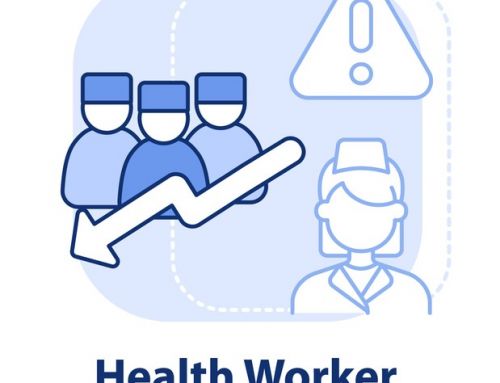Dialysis Patient Citizens sent its comment letter to the Centers for Medicare & Medicaid Services (CMS) expressing concerns and providing feedback on its End-Stage Renal Disease Prospective Payment System and Quality Incentive Program proposed payment rule (CMS-1691-P).
The letter was informed by results from Dialysis Patient Citizen’s 2018 membership survey and focused on the following areas:
- Quality incentive program and the meaningful measures framework
- Transitional drug add-on payment adjustment and payments to reward innovation
- Request for information on price transparency
Our hope is that by addressing these important topics, CMS will make amendments to the rule that will ultimately lead to better outcomes for individuals on dialysis.
Read the full letter below:
Seema Verma, Administrator
Centers for Medicare & Medicaid Services
200 Independence Avenue, SW
Washington, DC 20201
Re: CY 2019 Changes to the End-Stage Renal Disease (ESRD) Prospective Payment System and Quality Incentive Program (CMS-1691-P)
Dear Administrator Verma:
Dialysis Patient Citizens (DPC) writes to offer its comments on the above referenced payment rule. DPC’s membership, currently 32,000, is restricted to kidney disease patients and their family members. DPC is a patient-led organization. Our by-laws require that the President, Vice President and at least 51% of the Board be current dialysis patients. For the past several years, the non-dialysis patients serving on the Board have been former dialysis patients with kidney transplants. Most of our volunteer board members have represented their peers on CMS technical expert panels and/or advisory committees of other health care organizations such as the National Quality Forum and Patient-Centered Outcomes Research Institute. DPC is committed to promoting access to high-quality dialysis care for individuals with ESRD; to prevention of, delayed onset of, and safe transition to ESRD among individuals with chronic kidney disease; and access to kidney transplantation as well as to other alternatives to dialysis that may emerge.
We are pleased to report that our comments are informed by DPC’s 2018 Membership Survey. This year we fielded the survey during the comment period for the NPRM in order to ascertain and pass along the collective voice of dialysis patients on matters introduced in or relevant to the payment rule. In years past, this survey was conducted by the polling firm Ipsos; this year it was conducted by that firm’s successor organization, Kynetec, by members of the same team of opinion research professionals.
In previous years patients were notified of our surveys by both electronic and regular mail, and given the option to call a toll-free number to take the survey verbally; about one-third of respondents typically took the survey telephonically. This year, to save money, the survey was conducted entirely via electronic means. Fortunately, the number of respondents dramatically increased to nearly 1,000 this year.
- Quality Incentive Program and the Meaningful Measures Framework
The patients on the DPC board have spent considerable time discussing the Meaningful Measures Framework and, should CMS reduce the QIP measure set, which measures DPC would urge prioritizing in a leaner QIP. We agree with the Agency that CMS value-based purchasing programs should “only assess those core issues that are most critical to providing high-quality care.” We have long supported movement to a smaller QIP measure set and greatly appreciate the step in this direction. We note that, somewhat paradoxically, the Meaningful Measures Framework lists 19 “meaningful measure areas.” This strikes us as casting a bit too broad a net to yield a “parsimonious” measure set. Within DPC we have been able to find consensus on a few measure areas to prioritize, as discussed below.
- Patients’ Priorities for Quality Measurement
Exhibit 1 displays the results of a survey question that listed 20 areas of quality or patient experience and asked patients to choose no more than five measurement priorities. This list was not, nor could have been, comprehensive, but was intended to sound out patients on a variety of dimensions of their care, and gauge sentiment on specific issues of current salience.
You will note that five of the top seven relate to patients’ experience of care. Two are CAHPS survey questions that are currently reported individually, and included in the Quality Incentive Program; three others relate to CAHPS questions that are not broken out separately and instead included—and perhaps obscured—in composite measures. We believe that responses to these CAHPS questions, about facility staff respect, listening, and professionalism, and physical comfort during dialysis, should be reported separately.
The considerable patient interest in measures of satisfaction with their care points up the current crisis in survey response rates and its impact on ICH-CAHPS. It is not acceptable for such important measures to go unreported for half of U.S. dialysis facilities. We urge the Agency to urgently step up efforts to find ways to obtain and report CAHPS scores for a greater proportion of facilities.
Development of Patient-Reported Outcome Measures for dialysis is a priority area for DPC. The survey indicates considerable patient interest in a measure of Dialysis Treatment Tolerability, a proposal that was brought to the recent Technical Expert Panel on PROMs but not followed through on. We realize that there is no consensus that the elements encompassed in this concept—cramping, crashing, recovery time, and the like—are amenable to improvement by clinicians. However, we feel that it would be worth investment by CMS to explore this further, perhaps looking at data from KDQOL surveys to determine whether there are clinics that perform particularly well or particularly poorly in minimizing such effects.
We assess that the consensus of both our membership and volunteer leadership is that the following areas should be given priority in the QIP:
Dialysis Adequacy
Safety/Bloodstream Infections
Depression Management
Medication Management
ICH-CAHPS
Patient-Reported Outcomes
We believe these areas align well with the CMS Meaningful Measures Framework. We urge the Agency to reduce the measure set from the eleven proposed in the NPRM to a smaller set with greater weights that will focus providers’ attention and resources on improvement or maintenance of quality in areas of importance to patients. We do not believe that measures weighted at 2 or 3 percent of the QIP score, as proposed in the NPRM, can realistically draw focus from providers.
We conclude that the following five areas have not particularly resonated with our membership or leadership:
Transfusion Ratio
Mortality
Hospitalizations/Readmissions
Pain Management
Transplant Access
We are cognizant that this conclusion as it relates to hospitalizations and mortality is not in accord with the Meaningful Measures Framework’s focus on “big-dot” outcome measures. We think this reflects some doubt among patients as to the degree to which these outcomes are within the control of a dialysis facility in the current siloed, fee-for-service payment environment.
Patient safety measures remain a priority for DPC. The PROMs TEP discussed the possibility of developing a patient safety PROM. We think it is worth developing a patient-reported measure of perception of safety, although we are not sure it falls in the realm of interactive PROM reporting, e.g., as thru a PROMIS-type system, so much as through the anonymously-reported realm of CAHPS.
Patients continue to prioritize dialysis adequacy (Kt/V) as an important measure, and even as it becomes “topped out” we think there is value in keeping this measure in the QIP for its sentinel effects due to its importance to patients.
The NPRM proposes removal of the Serum Phosphorus and Pain Assessment measures. Inasmuch as our survey found relative disinterest in these dimensions of care as areas for which clinics should be held accountable, we have no objection.
The NPRM proposes adding a Transplant Waitlisted measure to the QIP. It appears from the survey that patients do not think this is an outcome for which dialysis clinics should be held accountable, so we urge that this measure continue to be reported on the Dialysis Facility Compare website but do not urge its inclusion in the QIP.
The NPRM also proposes adding a Medication Reconciliation measure to the QIP. We did not include this option in the survey but our Board believes this measure has merit.
- The Future of ESRD Quality of Care Amid Movement to Global Payments
In just a few years, ESRD patients will be permitted to enroll in Medicare Advantage plans. Already we are seeing dialysis providers take on risk for the total cost of care in arrangements with insurers such as Aetna and Highmark, as well through CMMI’s ESRD Seamless Care Organization demonstration. We expect that large dialysis organizations in particular will partner with MA plans in TCOC arrangements beginning in the next decade, which will incentivize—perhaps much more strongly than QIP payment reductions—the prevention of hospitalizations and other avoidable complications.
This new environment will raise questions as to what role CMS quality programs should play in the future. It is quite possible that far fewer dialysis treatments will be subject to FFS payment from CMS. We urge the Agency to consider all the issues raised by a potential paradigm shift in dialysis care. (Notably, earlier this year, a member of the Medicare Payment Advisory Commission mused, at a public meeting, that the ESCO program ought to be expanded to a mandatory payment model pursuant to the Innovation Center statute.) It would be helpful to convene stakeholders, including MA Organizations, dialysis providers, and patients, to hear about their plans for implementing the ESRD Choice Act. While we expect that the future will bring greater care coordination and improved outcomes, unintended consequences are possible. The Agency needs to be on top of this transition, to anticipate and prevent any problems for beneficiaries, and the time to begin a dialogue with stakeholders is now.
- Consumer Comprehension of the QIP Performance Score Certificate Mock-Up
Per the Agency’s request we included in our 2018 Patient Survey a test of consumer comprehension of the Performance Score Certificate mock-up transmitted to us by CCSQ. In designing the test we consulted published literature on such testing and with Brenda Cude of the University of Georgia, a noted expert on the design and testing of consumers’ understanding of disclosure documents. We also received advice from Faith Richert of Kynetic.
As part of the online survey instrument we displayed the exact PSC mock-up we received from CCSQ with one alteration: we displayed a score of 61 rather than the 55 (median) score included with the mock-up. Doing so permitted us to test (1) whether patients could recognize an above- or below-average score, (2) whether the fact that the median is not 50 caused confusion, and (3) whether consumers recognized that the raw score did not represent a percentile ranking. We inserted the number 61 because a lion’s share of facilities have a TPS between 50 and 80.
Results are displayed in Exhibit 2. We regret to report that in fact many consumers were confused. The correct answer was “This facility scores better than average.” As the Exhibit indicates, 50% of respondents checked this box; unfortunately, only 39% checked this option alone. It appears that, as we feared, about 30% believed the score was a percentile and about 20% did not seem to understand that 55 was the median and not a percentile.
We would refer you to the Federal Plain Language Guidelines, which state “The first rule of plain language is: write for your audience. Use language your audience knows and feels comfortable with. Take your audience’s current level of knowledge into account.”
The minimalist PSC fails this first rule. The mock-up is difficult to understand because it reports a raw score that, in itself, is arbitrary and meaningless. We understand that the mock-up reports elements that are statutorily required, but the Agency has not heretofore suggested that the statutory elements represent a ceiling as well as a floor.
We also asked patients what information they would like to see on a PSC. As indicated on Exhibit 3, the vast majority of patients want to see how a facility scored on individual measures rather than a composite score.
CMS quality reporting ought to be able to start a conversation about quality between patients and their clinicians. If the PSC does not let patients know the areas that are being graded and performance in each of those areas, any conversations must start by the patient asking where to find criteria and scoring breakdowns, rather than with the substance of facility performance on relevant metrics.
DPC urges the Agency to scrap this draft and try again. As one of our board members noted, if the language of the current PSC is confusing, the solution is to revise the language to be understandable. The elimination of “reporting measures” from the QIP offers an opportunity to simplify the PSC considerably. This is not to suggest that simplification will be an easy task, but it could be made easier by soliciting greater input. For instance, CMS could sponsor a symposium with experts commissioned to present proposed revisions and stakeholders on hand to critique them. Or the Agency could sponsor a contest for communication students to submit entries, with the prize winners chosen by a panel of patients. Needless to say, we also urge staff to re-familiarize themselves with the Federal Plain Language Guidelines.
- Consumer Understanding of the QIP Program
Each year that we have fielded our Membership Survey we have asked two questions about the QIP: Have you seen the Performance Score Certificate posted in your facility, and what is your understanding of the QIP’s intent.
When we first asked in 2013, the QIP was relatively new. At that time, 27 percent of patients reported having seen the PSC; of those, 35 percent could correctly identify the purpose of the QIP program, meaning that about 10 percent of respondents had an awareness of QIP reporting.
This year’s survey results indicate only marginal progress in patients’ awareness of the QIP five years on. As indicated on Exhibit 4, only 29 percent of patients had seen the PSC; however, 65 percent of those patients understood the purpose of the QIP, meaning that we find total awareness of the QIP stands at 19 percent. A glass-half-full view would be that awareness has doubled; a glass-half-empty view would be that awareness remains at a level disappointing to advocates of health care transparency. But because of the changeover in our survey administration modality, we cannot be sure that the increase is not a reflection of sampling a more tech-savvy and informed subpopulation.
One concern worth highlighting is the possibility that patients have not seen the PSC because a large number of facilities are not displaying it, or not displaying it prominently. We have heard anecdotal reports from DPC volunteers that the PSC is not displayed in their facilities. It may be appropriate for CMS to undertake an audit to determine whether the requirement that the PSC be displayed is being disregarded.
- Financial Impact of the QIP
While we support value-based purchasing for ESRD, we are mindful that the QIP, unlike CMS’ other VBP programs, is not budget-neutral. The Rule projects that in PY 2022, 44 percent of facilities will receive payment reductions totaling $38.1 million. This will be $38 million less money available to support the country’s dialysis infrastructure, at a time when commercial reimbursements are threatened by a scorched-earth legislative and ballot initiative campaign led by a labor union with a vendetta against one of the large dialysis organizations.
We are further disheartened by the results of the Rule’s categorical impact analysis, which indicated that disproportionately larger payment reductions are expected in southern states where ESRD patients, as is the case with the general population, are less healthy; in the urbanized Middle Atlantic region, where many patients are economically disadvantaged; and in US Territories such as Puerto Rico and the Virgin Islands which are trying to recover from hurricanes and in the case of the former, also facing severe economic problems beyond the property damage. Meanwhile, disproportionately smaller reductions will be taken in the healthiest states—New England, the Mountain states, and Upper Midwest which also benefit from lower poverty rates. Such disparities are inevitable when outcome measures account for a greater weight in the QIP score.
We remind the Agency of the ASPE report’s findings on Social Risk Factors and their impact on the QIP and other VBP scores. The report is nearly two years old and there has been little progress in implementing its recommendations. As we have stated before, we believe that if the QIP’s structure were altered from a nationwide tournament format to competition within peer groups, the burden of QIP reductions would be equalized and investors would not be disincentivized to operate facilities in poor and less healthy locales.
- TDAPA and Payments to Reward Innovation
We appreciate that the Agency recognizes that “concerns regarding inadequate payment for renal dialysis services and hindrance of high-value innovation, among others, are important issues,” and the assurance that CMS contemplates these in determining payment policies. We also appreciate the acknowledgement that dialysis facilities face “unique circumstances with regard to implementing new drugs and biologicals into their standards of care,” including budget revisions and new contractual arrangements to accommodate the new therapies into care plans; and the recognition that financial barriers may prevent the uptake of innovative new drugs and biologicals and result in their under-prescription. We therefore applaud the addition of § 413.234(b)(1) and revision of § 413.234(c) to reflect that TDAPA will apply to all new renal dialysis injectable or intravenous products, oral equivalents, and other forms of administration drugs and biologicals, regardless of whether or not they fall within a functional category.
However, we are gravely concerned by the announcement that TDAPA will apply for only 2 years, after which facilities are expected “to set up system modifications, and adjust business practices so that there is seamless access to these new drugs within the ESRD PPS base rate.” We vehemently disagree with the statement that adding dollars to the ESRD PPS base rate for new renal dialysis drugs and biologicals that fall within existing functional categories “would be in conflict with the fundamental principles of a PPS.”
It is of course true that the stated purpose of a PPS is to make payments “based on a predetermined, fixed amount that reflects the average patient” with providers at risk for profit or loss “resulting from the difference between the payment rate and the facility’s cost which creates an incentive for cost control.” But that is only one component of the economic considerations behind payment. Although the United States, unlike other nations, imposes no cost effectiveness analysis on treatments, the formula behind such analyses abides: for health care, value equals cost over additional years of life gained times quality of life. A treatment that provides either longevity gain or improved quality of life offers additional value. Therefore, longevity gains or QOL gains, if reimbursed at a proportionately higher amount, will offer identical value to the Medicare program and its beneficiaries.
We all know that dialysis, as a life-sustaining treatment, offers easily quantifiable longevity gains. But patients know that because dialysis can’t replace all of a kidney’s important functions, and because it often has unpleasant side effects, in addition to requiring unavoidable inconveniences, it does not restore a full quality of life. Any innovations in treatment that improve quality of life or tolerability of treatment have great value to patients and are worthy of increased reimbursement.
This summer, DPC surveyed our members on their priorities for innovation. We asked patients what conditions they would most like seen addressed by innovative technologies. As Exhibit 5 indicates, nearly 60% of patients cited the fatigue and low energy level that results from ESRD as a condition they hope could be alleviated by new technology. Generally, patients cite three categories of conditions that merit improvement from new technology:
- Tolerability of treatment. Current dialysis technology, which has scarcely improved since its inception, leaves patients feeling drained after the treatment and generally fatigued most of the time. As one of our board members observed, it is this fatigue that prevents most patients from remaining employed. An improvement to dialysis that would permit patients to work is surely the ideal example of a quantifiable value added. But for patients, even relief from other side effects of dialysis, such as cramping and the drop in blood pressure sometimes called “crashing,” would have value.
- Temporal and spatial constraints of dialysis. One of our board members referred to the onerous time and location commitment to treatments as “the shackles of dialysis.” Patients would be grateful for relief from these constraints through an implantable or wearable artificial kidney.
- Alleviation of symptoms of ESRD. Dialysis cannot fully replace the body’s kidneys; any new technology that can alleviate ESRD symptoms like insomnia, nausea, lack of appetite and itching—conditions that dialysis can’t eliminate—would have considerable, tangible value to patients.
Further, CMS has pursued payment reforms that reward providers for upstream improvements in care that reduce the total cost of care. As CMS has recognized outside the FFS context, it is lowering the total cost of care, not the costs of individual procedures and treatments, that is the key to unlocking value in the Medicare program. Any improvements in ESRD treatment that reduce complications are worth not only their input costs but the costs of hospitalizations that are avoided in the ESRD population, and CMS should recognize this not only in setting benchmarks for APMs but also when adjusting FFS payments.
We also take issue with the statement that “it is not the intent of a PPS to add dollars to the base whenever something new is made available.” This is a straw man argument—nobody is suggesting that the payment be increased on account of more expensive “me-too” substitute products that add no value for patients or for the Medicare program.
Finally, we think CMS is sending the wrong message to stakeholders. The message to researchers, manufacturers, and venture capital appears to be: You have two years to recover the cost of your investment, and Medicare will not take into account your success in adding value to beneficiaries or the program. While we share the Agency’s hopes that innovative products can replace less efficacious ones at the same or lower cost, we think this is wholly unrealistic. We think CMS’s message should be: If you can improve quality of life or reduce hospitalizations and mortality, you will be rewarded for your investment. Meanwhile, the NPRM’s message to dialysis providers is that adoption of new products could ultimately reduce their bottom line, thereby discouraging their introduction in the first instance.
We realize that two years of TDAPA payment is unlikely to generate conclusive evidence of a new product’s value under a longevity, QOL, or TCOC analysis. But we believe that if there is a colorable claim that a new treatment adds value, the cost of that treatment should be built into the base rate for year 3 while further developing evidence. If the claims prove exaggerated, and the new product falls into disuse, CMS would have the option of reducing or eliminating the additional expenditure.
- Request for Information on Price Transparency
This year’s payment rules solicit comments on proposals to expand price transparency. The ESRD and other NPRMs state a concern that “challenges continue to exist for patients due to insufficient price transparency,” including “patients being surprised by out-of-network bills for physicians, such as anesthesiologists and radiologists, who provide services at in-network hospitals [and] physician fees for emergency department visits.”
The problem of surprise bills creates a dilemma for ESRD patients. Generally speaking, they prefer to keep their private insurance rather than switch to Medicare, as the actuarial value is richer, access to care is better, and satisfaction ratings are higher. Additionally, in the Exchange, low-income subsidies can be more generous than Medicare’s. But out-of-network bills can quickly erode the financial advantages of private insurance. Dialysis patients should not have to be ducking crossfire between physicians and insurers as they try to cope with their kidney failure.
The 2015 DPC Member Survey found that 30 percent of commercially insured dialysis patients received a surprise bill. Of those patients, 32 percent were charged an out-of-network rate by a provider they thought was in-network. These findings were almost identical to those of a Consumers Union survey of commercially insured individuals, which found that patients who had been to a hospital during the past two years were more likely to receive such bills.
However, we believe it’s a mistake for CMS to characterize surprise medical bills from out-of-network providers as a “transparency” problem—it is more accurately stated as a problem of gaming by physicians who wish to reap the benefits of practicing at an in-network facility without bearing any of the responsibilities. And treating price problems as transparency problems could actually harm consumers more than it helps them.
Price transparency can have two consumer benefits. In a pure “shopping” scenario, in which a patient is able to compare prices, a consumer might be able to obtain care at a lower cost. In a post-hoc negotiating scenario—that is, the aftermath of care obtained on an emergency basis, with no prior agreement on price, transparency can benefit the patient, but only if the proper price information is made available.
The problem for consumers turns on the distinction between “charges” and “market value” of a service. A charge is a provider’s standard asking price. The market value of a service is the amount the provider usually receives for care. Standard charges are much higher. In any case in which a consumer must negotiate prices, he or she will be advantaged by knowing the market value, or knowing the amount that Medicare typically pays. We do not think that there is any value in requiring providers to report charges—that only gives these arbitrary numbers more credibility and in so doing creates further consumer confusion. (We would also note here that we are aware of no instances of an out-of-network dialysis facility attempting to collect its charges from an ESRD patient, nor balance billing one of its dialysis patients—this is primarily a problem of out-of-network physicians.)
It is important to note that under most states’ laws, in a transaction where the parties do not have an explicit agreement on price, a court applies the legal doctrine of quantum meruit to set a service provider’s fee. In a medical billing case, that fee is set at the market value, not the provider’s “charges.” Sadly, few consumers are aware of this doctrine and most will agree to pay the charges to get bill collectors off their backs. A potential problem that transparency could cause is that if charges are posted, providers can argue that consumers are on notice of them and implicitly agree to pay them; at least one court decision suggests that posting of prices could negate patients’ quantum meruit protections. So we oppose any requirement of posting of charges, but are receptive to the posting of Medicare fee schedules which, as Secretary Leavitt noted when posting them a decade ago, might help consumers negotiate lower fees.
We further suggest exploring whether the Hospital Conditions of Participation could be revised to require that hospitals, when granting franchises to hospital-based physicians (or staffing companies representing them) to operate within their facilities, make such franchises contingent upon the physicians/staffing companies’ agreement to enter into binding arbitration on network contracting terms with insurers for which the hospital is a participating provider.
While we realize that the surprise medical bill problem is not a Medicare problem, the phenomenon of hospital-based physicians refusing to participate in network arrangements is a spillover problem for the Medicare program. That is because their lone-wolf business model gives them no incentives to be mindful of the total costs of care (TCOC) for the population they treat. While we are aware of no evidence in this regard, we strongly suspect that Accountable Care Organizations suffer—or are rendered impractical—when the physicians working in emergency departments are employed by physician staffing companies that do not participate in insurance networks or ACOs. In this lone-wolf model, ED and other hospital-based physicians operate purely under fee-for-service and profit only from volume, not from coordinating care or lowering TCOC. In fact, if they prevent an avoidable return to the ED they may actually lose money.
This is a particular risk for complex patients like the ESRD population, for whom many care coordination and global payment efforts are ongoing. Lone wolf doctors have no financial incentive to coordinate care for our patients even while their nephrologists, dialysis providers, and hospitals are part of an ACO, ESCO, or commercial insurance network (and about half of hospital admissions come through the ED, making those physicians de facto gatekeepers). Further, non-participation of hospital-based physicians in commercial networks prevents Medicare Advantage plans from influencing their practice styles, thereby increasing costs to Part C. By mandating network participation for these doctors, CMS can inculcate a mindset of accountability for costs and quality in these physicians that is necessary to move to value-based payment.
Thank you for your consideration of our comments and concerns. If you have any questions or would like additional information, please do not hesitate to contact me or our Government Affairs Director Jackson Williams.
Respectfully submitted,
Hrant Jamgochian, J.D., LL.M.
Chief Executive Officer

























